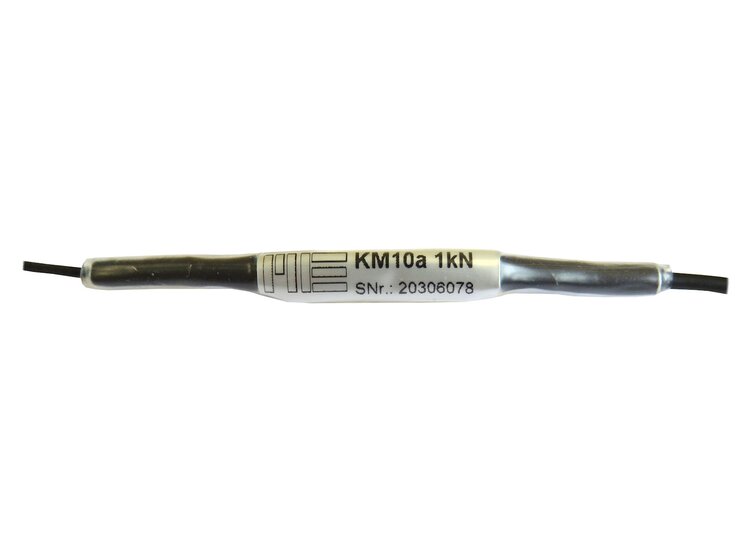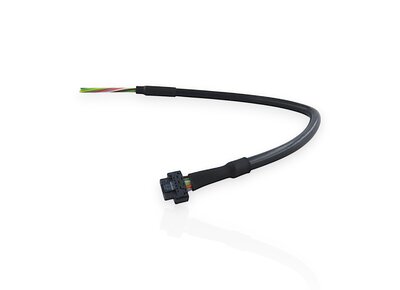The KM10a is an ultraminiature membrane force sensor. This load cell is used for force measurement in the pressure direction.
Similar to the KM10, the force introduction is made via the calotte (diameter 3mm, R10) in the center of the sensor.
With the KM10a sensor, the surface area is sanded to achieve linearity and reproducibility within the limits of 1% of the actual value. The adjustment board (7mm x 75mm x 4mm) built into the cable also ensures a lower temperature drift compared to the km10 force sensor. The highly flexible MESC-4x0014-PUR cable is used from the sensor to the adjustment board. From the adjustment board, the more robust PVC cable STC-31V-4 is used compared to MESC-4x0014. The adjustment board contains temperature-dependent resistances for the comparison of temperature-related drift < 0.01%/K. The adjustment board should therefore be about the same and contains matching elements for the temperature-related drift.


















